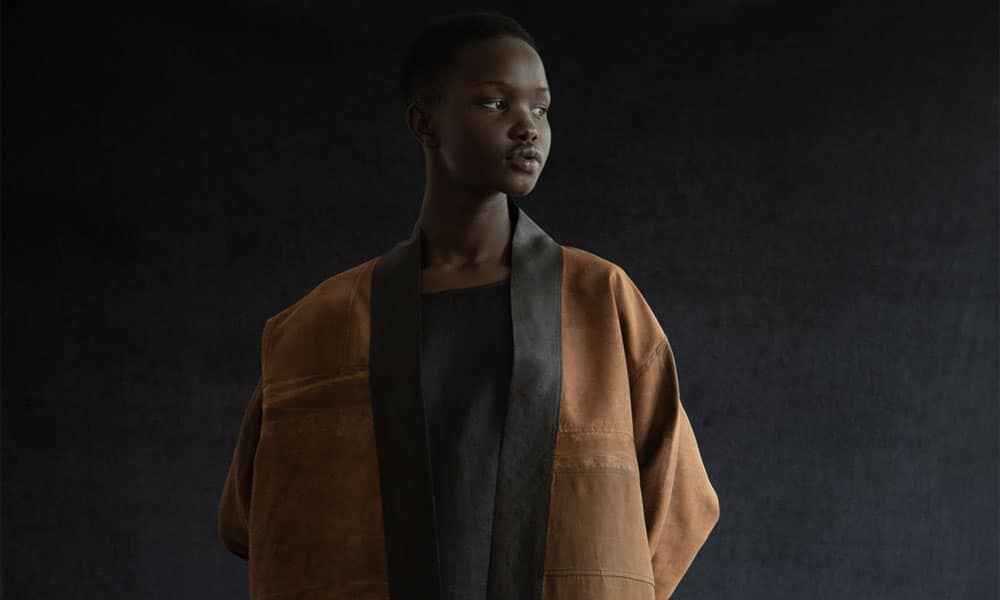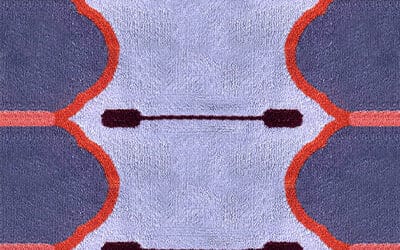Coco Chanel, Rei Kawakubo, Rick Owens, Yohji Yamamoto, Ann Demeulemeester and Issey Miyake have one thing in common: a profound love of black. Why black? Black is harmony; black is many shades; black is poetry, black is elegance; and especially black encompasses all colours. This is particularly true of the black achieved by mud silk, a textile process that in Southeast Asia carries with it a 2,500-year-old tradition. Throughout that time Artisan farmers from Guangdong province in the south of China have worked on gummed-silk or mud-silk ‘Xiang Yun Sha’, combining soil from the iron-rich Pearl River delta, an extract from the Shuliang yam, air from the texture of the finest silk, and water and fire from the bright May-to-October sun.
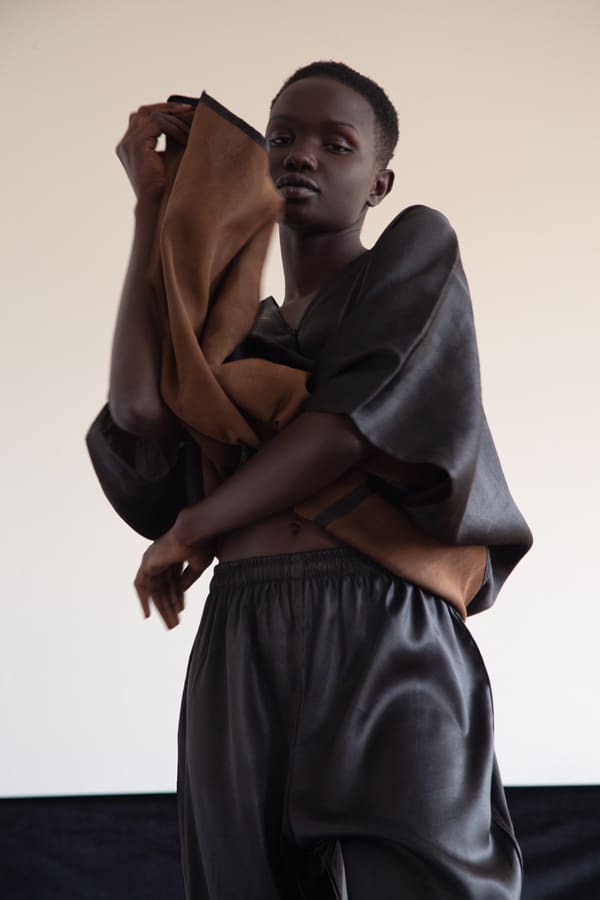
The fabric dates back to the Ming Dynasty in the fifth century. For a long time produced by the Hakka people in Guangdong, it has been known as ‘gambiered silk’, ‘tea silk’, ‘lacquered silk’, ‘Canton silk’ or ‘mud cloth’. Its cultural relevance was recognised in 2009 when the dyeing technique was added to the roster of China’s Intangible Cultural Heritage. But gummed silk can be made wherever there are tannin-rich river deltas, intense sunshine and base colorants such as gambier (uncaria gambir), ju-liang root or indigo. The Mekong River, flowing from China, along the Laos-Myanmar and Laos-Thailand borders, then across Cambodia to a rich delta in southern Cambodia and Vietnam, provides the appropriate conditions, as does Thailand’s Chao Phraya River.
Mud silk reflects every nuance of the relationship between climate and the earth. It starts with the renewable source of silk; using natural plant dyes, river mud, space, sunshine and the work of many people, it can be called a 100% ecological textile.
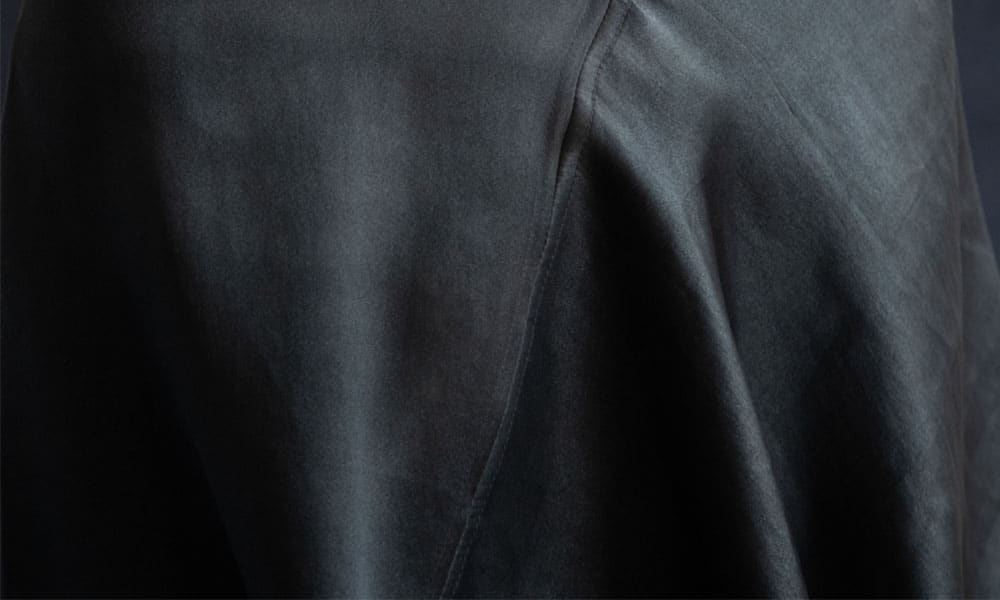
The lengthy manual process starts with drying the yams. They are then ground and simmered in a large clay basin until the water turns orange and the fabric takes in all the colour. Then the textile is laid down to dry and prepared to receive the many layers of mud from the Pearl River. This gives it a lacquer texture that is firmed with a thin layer of anthracite coal. As well as being labour intensive, the production process in Canton is season specific, and climate change is having a direct effect for two main reasons: alterations in the iron content of rivers due to over-exploitation, and shifts in the seasons making it difficult for artisans to plan and respond to sudden weather changes.
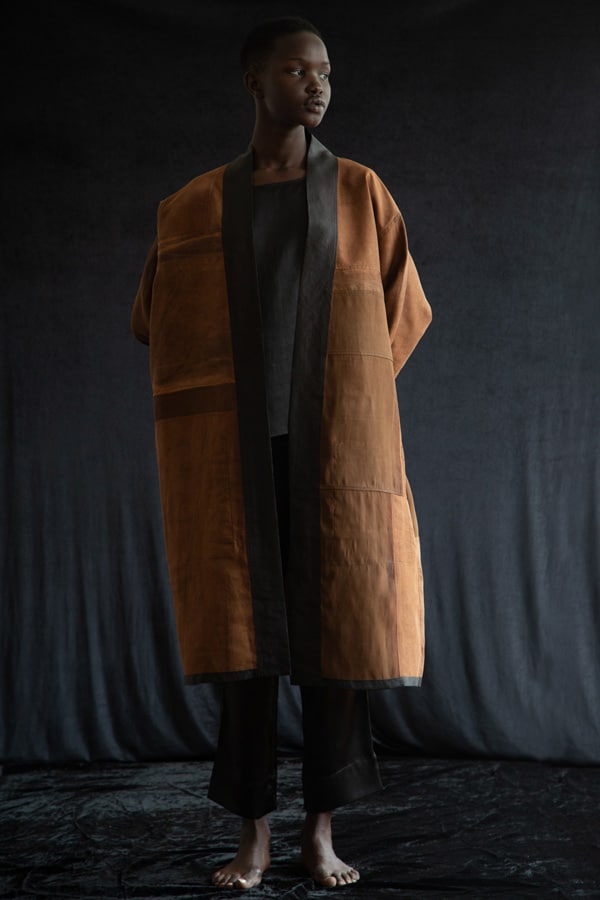
The fabric has two contrasting sides: a glossy black face resembling leather or paper, and a matte orange-brown reverse. The latter is achieved using Dioscorea cirrhosa from Guandong, a medicinal tuber known for its antibacterial and antivirus properties, meaning the fabric has particular benefit for people with sensitive skin. The black side has a thin, dark, resin-like film on its surface which has water-resistant properties and is durable and easy to care for. This, combined with its crisp, cool handle that gets softer with time, makes it a perfect choice for warm weathers.
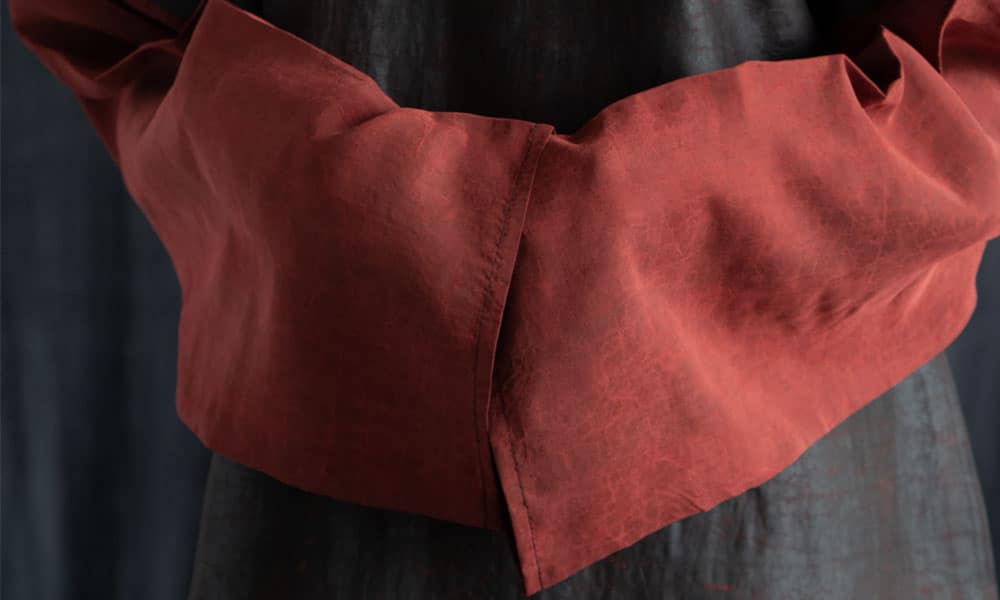
Noir Handmade is a brand created by Marcella Echavarria to honour mud silk—its qualities, process and tradition. Noir is a one-size unisex clothing label made to layer and to last. The company presents editions once in a while according to the availability of the fabric and the different hues that the Pearl River carries each year. The experience of donning mud silk is equivalent to wearing liquid, or being embraced by the wind. One can understand why the Chinese call it ‘perfumed cloud clothing’, ‘fragrant cloud cloth’ or ‘singing silk’.

